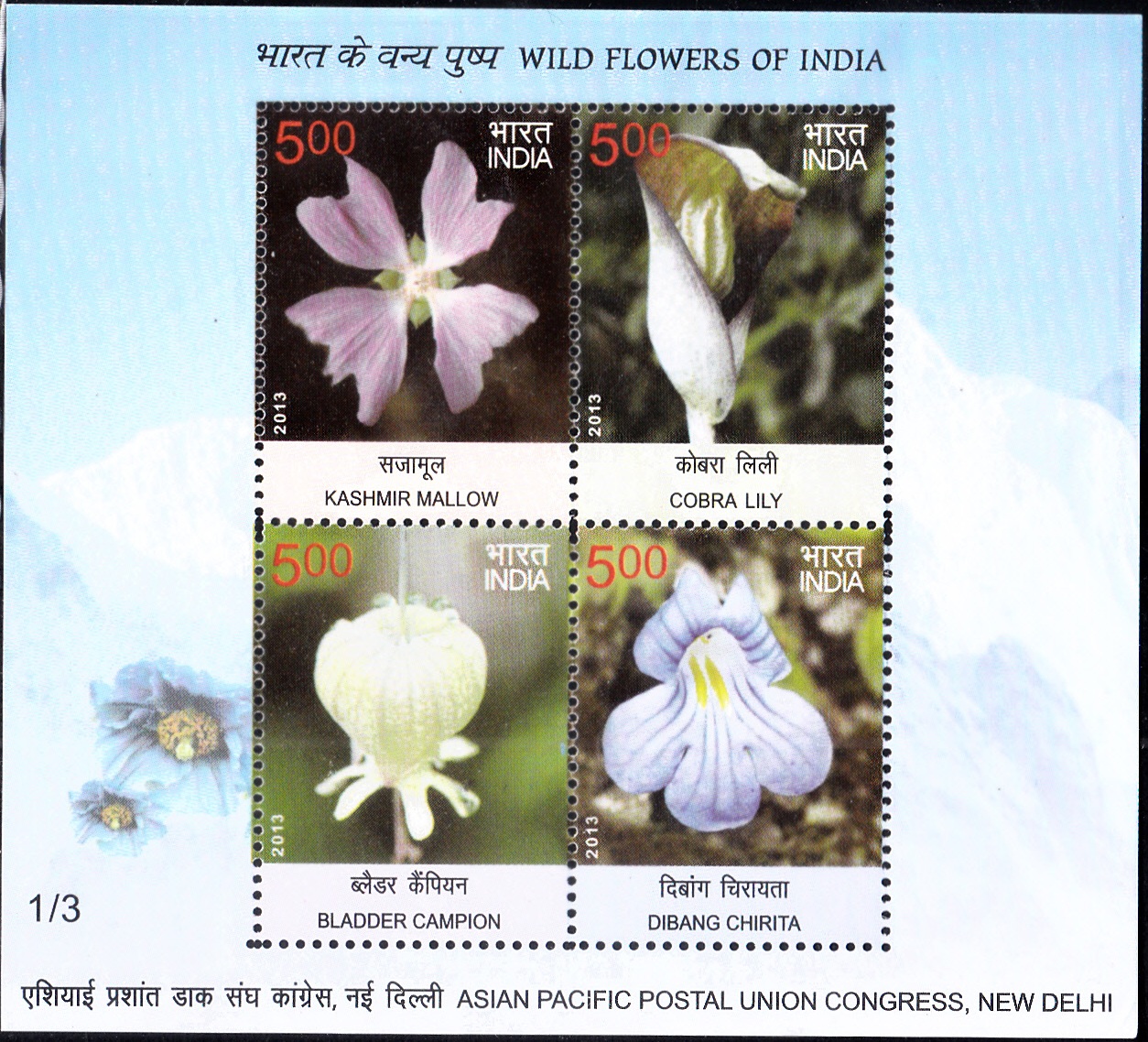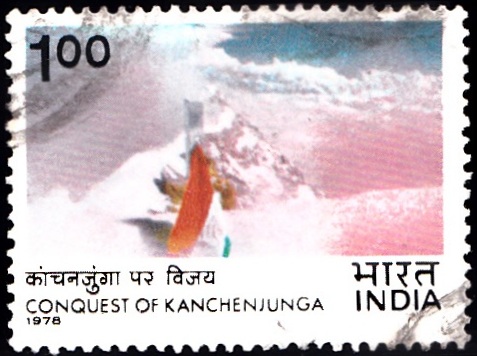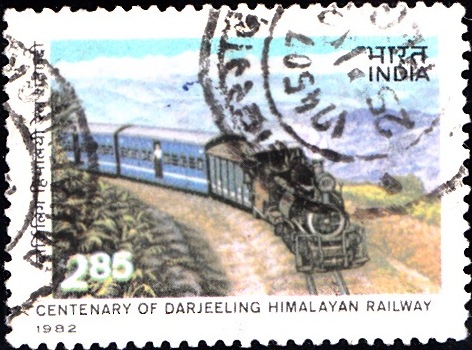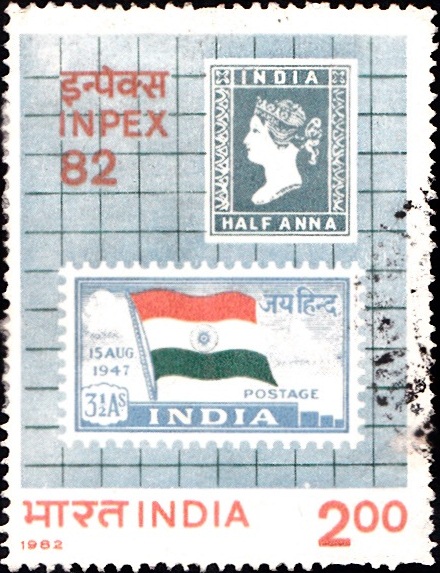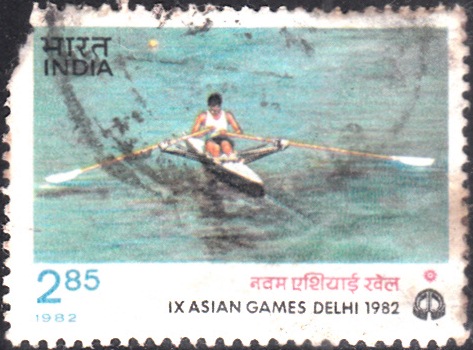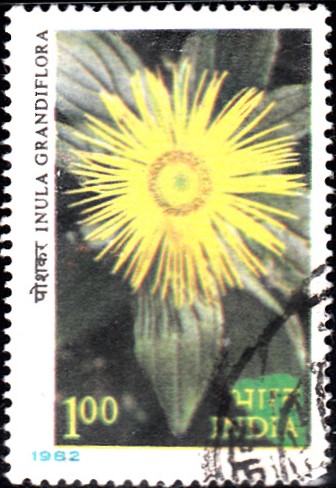
Indian Himalayan Flowers 1982
Complete set of 4 nos postage stamps on the Himalayan Flowers : Blue Poppy, Showy Inula, Cobra Lily and Brahma Kamal :
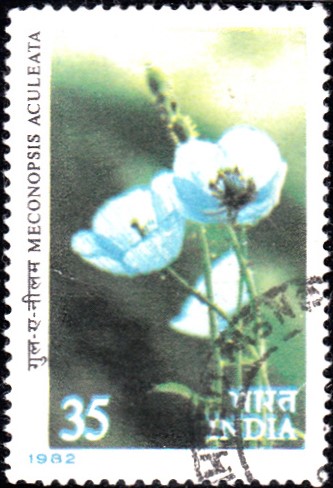

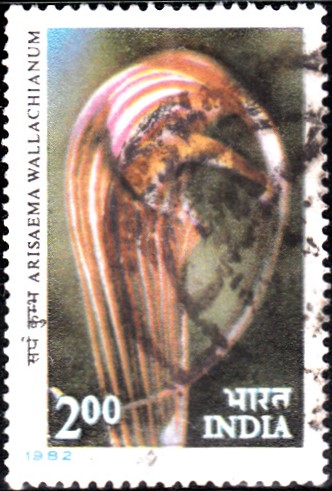
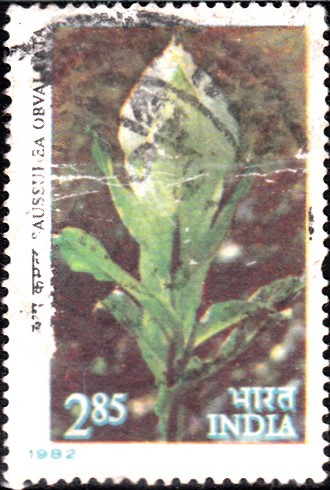 Issued by India
Issued by India
Issued on May 29, 1982
Issued for : Over 3,100 species of plants belonging to more than 1,100 genera are reported to occur in the Himalayas at altitudes of 1,800 to 5,000 metres or more. Out of this diversity, the Indian Posts and Telegraphs Department has chosen 4 flowers that have not only been rarely seen by plainsfolk, but whose pristine charm could hardly be improved upon by man despite centuries of selection and breeding.
Description of Designs :
The photographs featured on the stamps are by Ashvin Mehta. First day cover depicts Rhododendrons in Yumthang, Sikkim. Cancellation has been designed by Charanjit Lal.
Type : Stamps, Postal Used
Colour : Yellow, Red, Blue and Black
Denomination : 35, 100, 200 & 285 Paise
Overall size : 4.06 x 2.75 cm.
Printing size : 3.70 x 2.40 cm.
Perforation : 14½ x 14
Paper : Unwatermarked adhesive stamp paper
Number printed : 30,00,000 each
Number per issue sheet : 40
Printing process : Photogravure
Designed and Printed at : India Security Press
About :
- The charm of Himalayan flowers is as exquisite as the origin of the Himalayan range is astounding.
- Over 200 million years ago, when most of the world’s land-mass was united as Pangea, sub-surface basaltic rock-plates moved apart, carrying away, like giant conveyor-belts, huge chunks of land that formed continents as we know them today. While most continents moved slowly apart, according to the well-known Wegener’s theory, India made a spectacular journey. Once close to the present-day Malagasy Republic, the Roseapple–Tree Island (Jamboo Dweepa of Sanskrit lore) raced north-east and joined Asia to form its most historic subcontinent. As it did so, it scraped the seabed and piled it up as the Himalayas, the world’s youngest and most imposing mountain range. The pressure of the subcontinent against the mainland pushed the Himalayas ever upwards. On its snow-clad peaks and at dizzy heights, saints and seers looked God-ward, and poets and artists dreamt of Shangri–las. As the fertile plains below became some of history’s most criss-crossed lands, the Himalayas offered a foothold to a variety of unique plants that form a part of the subcontinent’s flora, which is, in the opinion of J. D. Hooker, one of the richest in the world.
- Meconopsis Aculeata (Blue Poppy; Gul-e-nilam, Kanta)
- In the colourful world of flowers, where blue does not occur frequently, the Blue Poppy is a rare ornamental. It gorgeously decorates alpine meadows and the rock debris of moraine with flowers that come in lovely shades of blue and purple, often luminescent against snowy background, and always pleasing. They are slender-pedicelled, usually 4-petalled, and measure 5 to 11 cm. across. The numerous golden-yellow stamens contrast well with the blue petals. The prickly herbaceous perennial, of the Poppy Family, has narcotic poisonous roots. It is found from Kumaon to Kashmir at elevations of 3,000 to 4,500 metres.
- Inula Grandiflora (Showy Inula; Poshkar, Rasan, Zanjabil-i-shami)
- The Showy Inula, a member of the Sunflower Family, is found from Kashmir to Nepal at altitudes of 1,800 to 3,660 metres. It is a stout, hairy perennial herb, 45 to 125 cm. tall, with aromatic roots, and sessile, serrulate, glandular, elliptic-oblong to subcordate leaves, 5 to 11 cm. long. The orange-yellow flowers measure 12 cm. across, and are borne in profusion in June.
- Arisaema Wallachianum (Cobra Lily; Arisaema propinquum Schott; syn. A. wallachianum Hook. f., considered a separate species in old literature; Sarpa-Kumbh, Kiralu)
- A member of the Aroid Family having starchy corm, the Cobra Lily derives its name from the hood-like incurved spathe, 7 to 21 cm. long, longitudinally striped purple or bronze. The female flowers on the lower part of the spadix have one-loculed ovaries that ripen into showy berries.The usually solitary 3-sect leaf on long petiole bears sessile leaflets 7 to 21 cm. long, with undulate margins. The plant is distributed from Simla to Sikkim at altitudes of 1,800 to 4,270 metres.
- Saussurea Obvallata (Brahma Kamal; Saussurea obvallata (DC.) Sch.-Bip., Wall. ex C.B. Clarke in old literature)
- The Brahma Kamal, a member of the Sunflower Family, is an excellent example of plant life at the upper limit of high mountains (3,000 to 4,600 metres). In membranous, boat-shaped floral trusses, it bears 2-6 sessile or shortly peduncled glabrous heads bearing purple or bluish flowers with brown fluff. Even in the cold air of the ice-bound arena, they come to bloom because of the warm space created by the leaf-cover – a device that qualifies the plant to become one of the sacred species whose flowers are offered up, as pointed out by Edgeworth, at the shrines of Badrinath. The glabrous, toothed leaves are 10 to 21 cm. long, the uppermost terminating into incurved, bladdery, veined, translucent, globose or hemispheric pale head, 7.5 cm. to 15.5 cm. in diameter. The herb, 15 to 46 cm. tall, has a pubescent or glabrate stem as thick as a little finger. Its thick curved root is applied to bruises and cuts.
- (Text by courtesy: S. N. Tata and T. C. S. Sastry).



